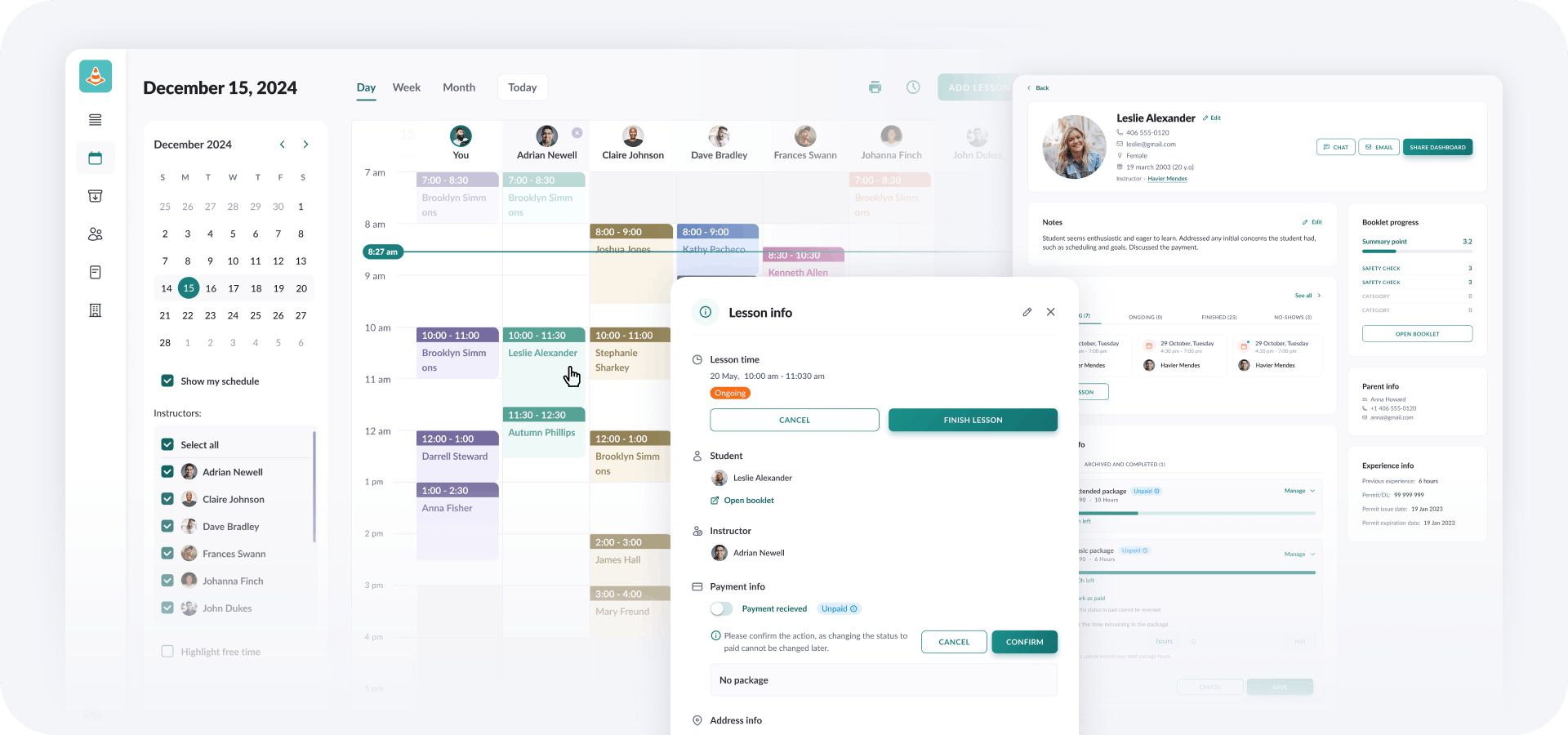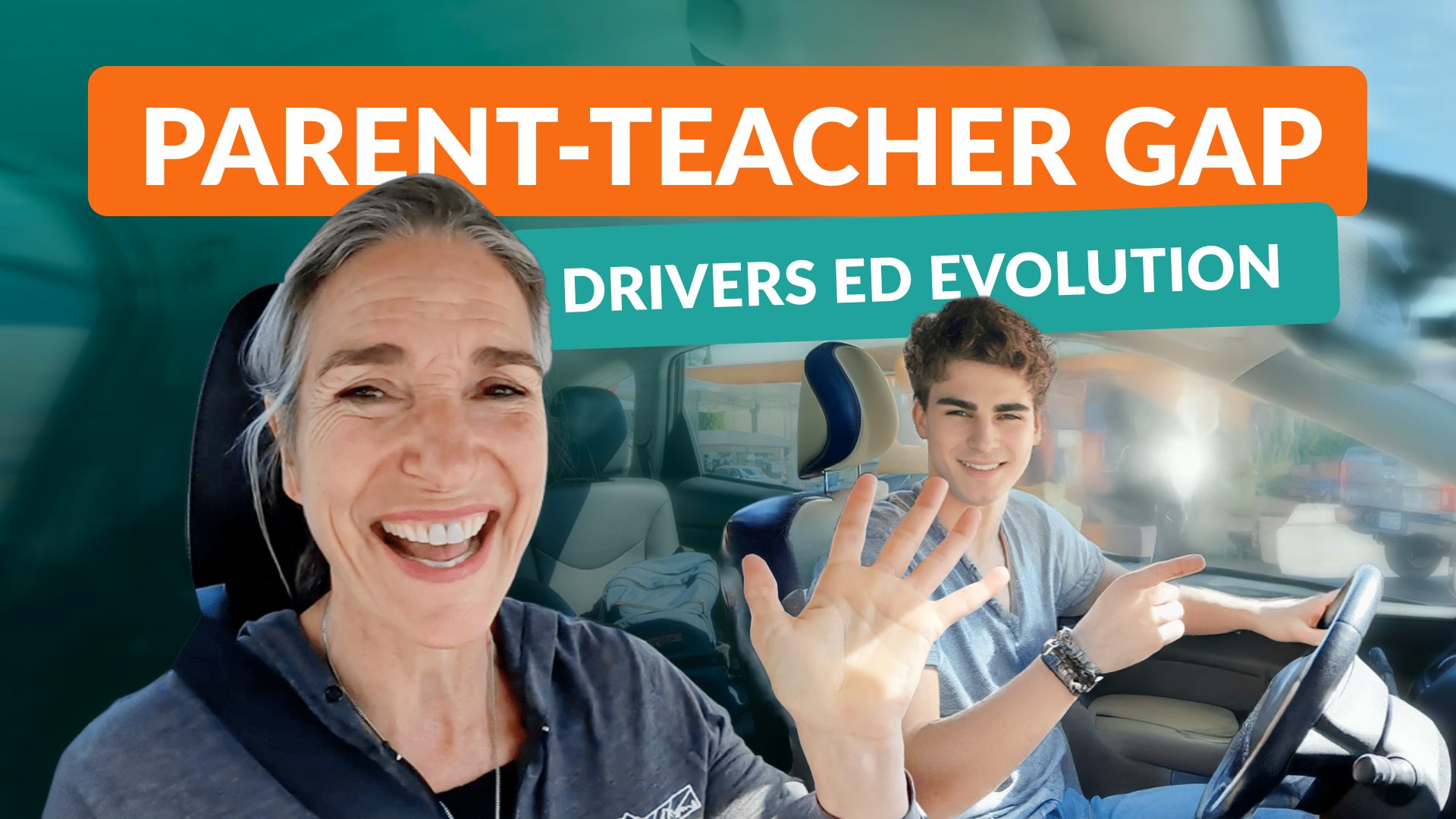
The Evolution of Driver Education: Understanding Today’s Parent-Teacher Gap
Over the last 40 years, driver education in the U.S. has shifted dramatically. Once a standard part of the school curriculum, formal training programs have steadily receded, leaving parents more responsible for teaching teens how to drive. At the same time, today’s teens are learning to drive in an entirely new world shaped by smartphones, advanced car tech, and increasingly complex traffic environments.
At Zutobi, we’ve taken a close look at how this shift affects families. We analyzed key changes in program structure, costs, accessibility, road safety outcomes, parental involvement, and the rise of online learning.
Our findings revealed a clear “Parent-Teacher Gap”—a growing disconnect between how today’s parents learned to drive and how they’re now expected to teach their teens. With less institutional support and more reliance on outdated habits, parents are often left navigating this process alone.
That’s where Zutobi comes in. Our goal is to modernize driver education and make it easier for parents to help teens become safe, confident drivers.
How Driver Education Has Changed: Four Decades of Transformation
1980s: The Golden Age of School-Based Driver Education
- 95% of eligible students had access to school-based driver education
- Programs were free or low-cost ($0-50)
- Standard training: 30 hours classroom, 6 hours behind-the-wheel
- Minimal parental involvement requirements
- Fatal crash rate: 47.46 per 100,000 teen drivers
What This Meant For Parents: Parents served primarily as practice supervisors, with professionals handling most of the instruction.
1990s: Early Signs of Change
- 80% of students still had access to school-based programs
- Costs began rising ($25-100 for school programs)
- Some states introduced minimum practice requirements
- Fatal crash rate dropped to 39.04 per 100,000 teen drivers
What This Meant For Parents: Parents still had supplementary roles, but some states began formalizing their involvement.
2000s: The Rise of Graduated Licensing
- Only 45% of students had access to school-based driver education
- Graduated Driver Licensing systems introduced nationwide
- Costs increased significantly ($50-200 for school programs, $300-500 private)
- States required 40-50 hours of parent-supervised practice
- Fatal crash rate: approximately 30.99 per 100,000 teen drivers
What This Meant For Parents: Parents became formally responsible for a significant portion of behind-the-wheel training, but with limited guidance on how to teach effectively.
2010s-2020: The Private Instruction and Digital Era
- Less than 20% of students have access to school-based driver education
- Costs soared ($500-1,000+ for private instruction)
- Required parent-supervised practice increased to 50-100 hours
- Digital learning platforms emerged as new solutions
- Fatal crash rate improved to 16.05 per 100,000 teen drivers
What This Meant For Parents: Parents became the primary driving instructors for most teens, taking on a role that requires teaching skills many don’t possess.
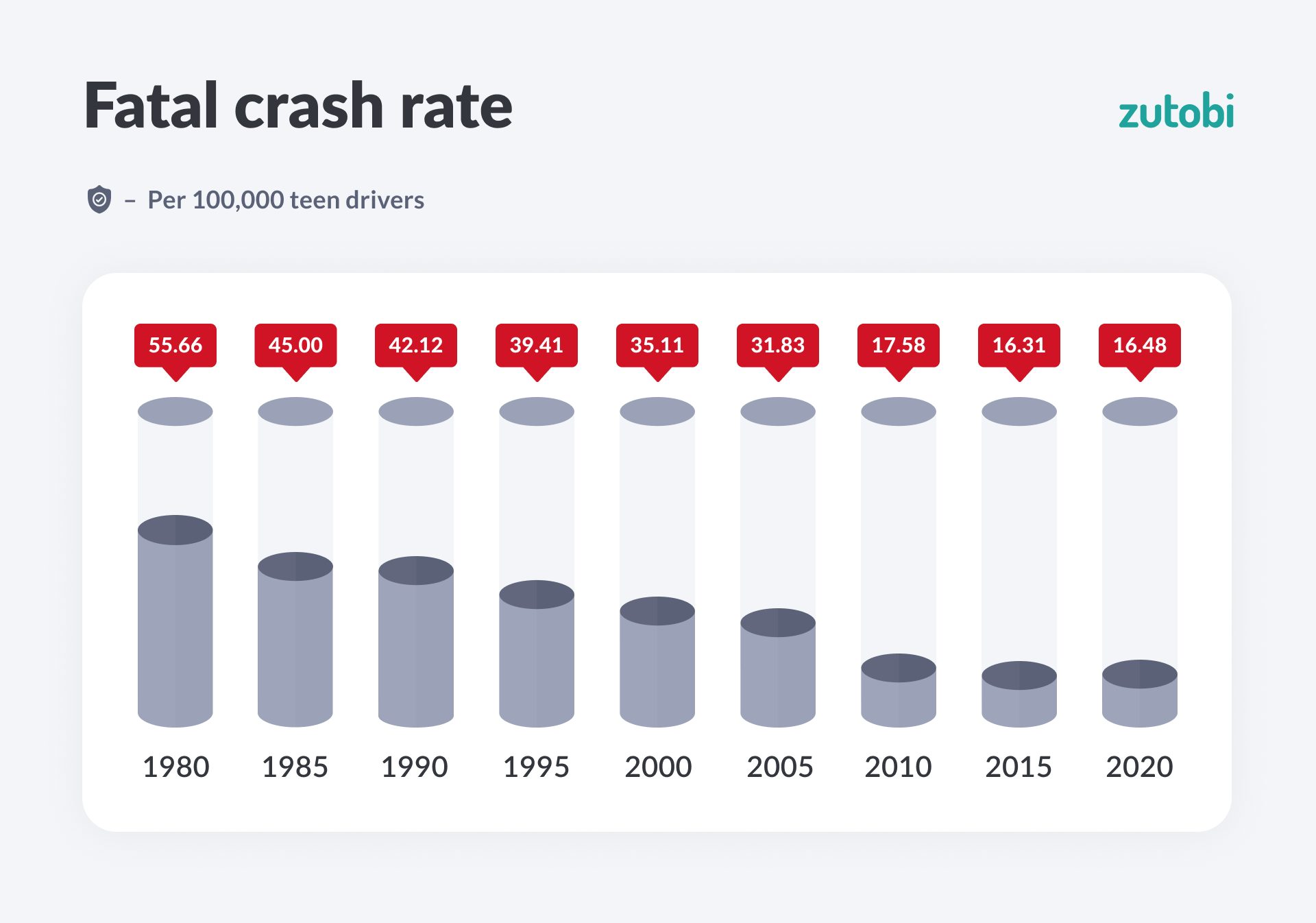
The Key Trends We Discovered
- The most dramatic change has been the reduction in the availability of school-based driver education from 95% to less than 20%.
- The cost of learning to drive increased from virtually free to potentially over $1,000, creating socioeconomic barriers to comprehensive driver training.
- Despite fragmentation in formal education, teen driving safety improved significantly. The fatal crash rate dropped by approximately 70% since 1980, thanks to GDL laws, tech, and increased practice.
- Online learning platforms created new opportunities for standardized instruction, potentially addressing some accessibility challenges created by the decline of school-based programs.
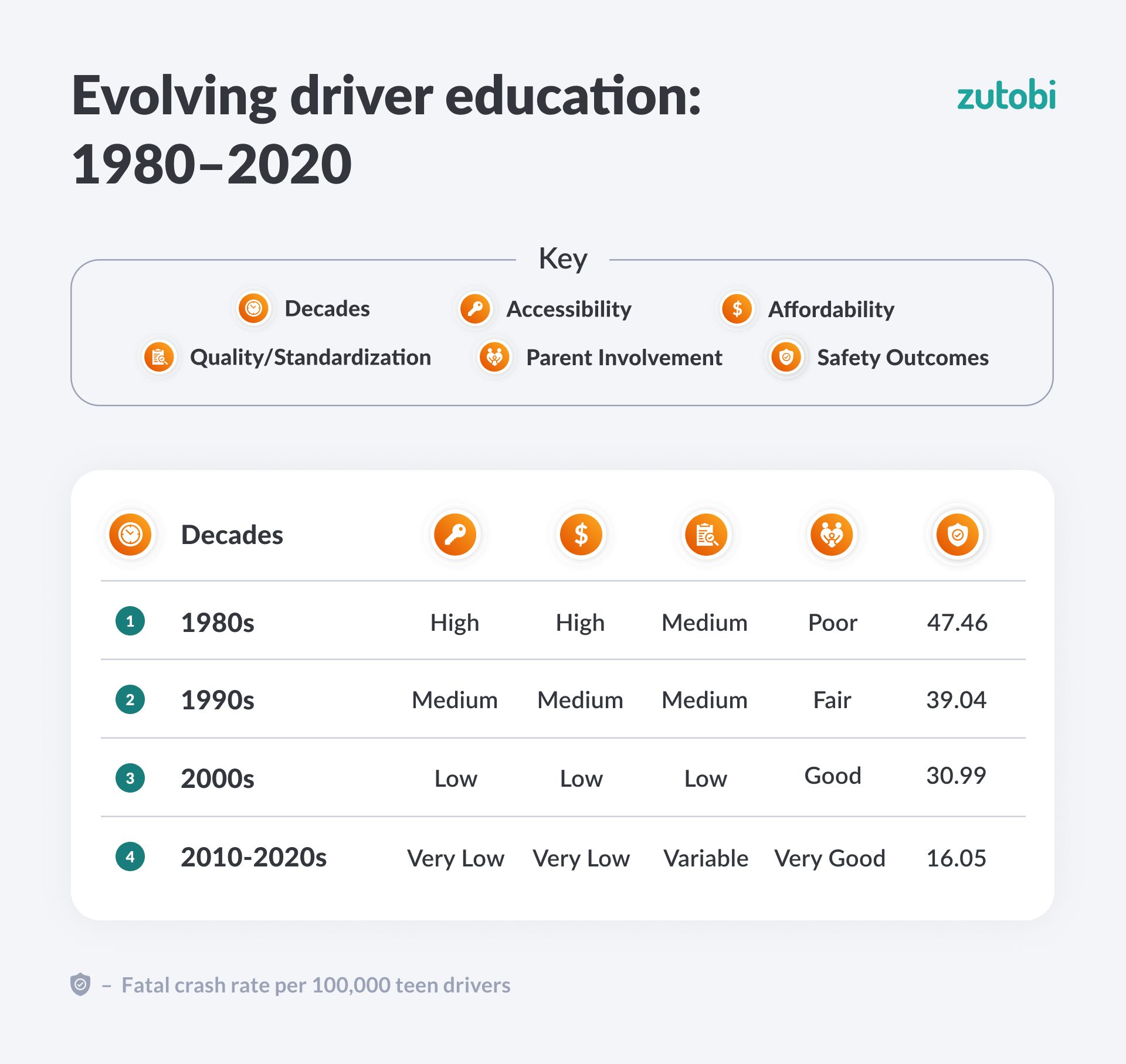
The Parent-Teacher Gap
Today’s parents face what we call the “Parent-Teacher Gap.” This disconnect refers to how parents learned to drive and how they’re now expected to teach their teens.
Most parents of today’s teens learned to drive between 1980-2000, when:
- Formal instruction was readily available
- Professional instructors handled most of the teaching
- Parental responsibilities were minimal
However, these same parents must now provide 50-100 hours of supervised driving instruction to their teens, often with minimal guidance on:
- Where to start and how to progress lessons
- How to teach complex maneuvers like parallel parking or roundabouts
- Instilling safe driving judgment rather than just technical skills
- Staying calm and confident while in the passenger seat
This creates a situation where those with the least teacher training have the greatest teaching responsibility—a complete reversal from previous generations.
How Parents Can Bridge the Gap
Based on our research, we recommend parents teaching teens to drive today:
- Follow a structured curriculum: Use a sequenced approach that builds skills progressively
- Learn about new technology: Understand modern vehicle safety features that didn’t exist when you learned to drive
- Start with the basics: Begin in controlled environments before advancing to complex driving scenarios
- Track progress: Use tools to document practice hours and skill development
- Manage emotions: Learn techniques for handling both parent and teen anxiety during practice sessions
- Focus on decision-making: Teach not just mechanical skills but judgment and risk assessment
- Consider digital resources: Explore platforms designed specifically to bridge the Parent-Teacher Gap
Zutobi Parent-Teen Training Guide
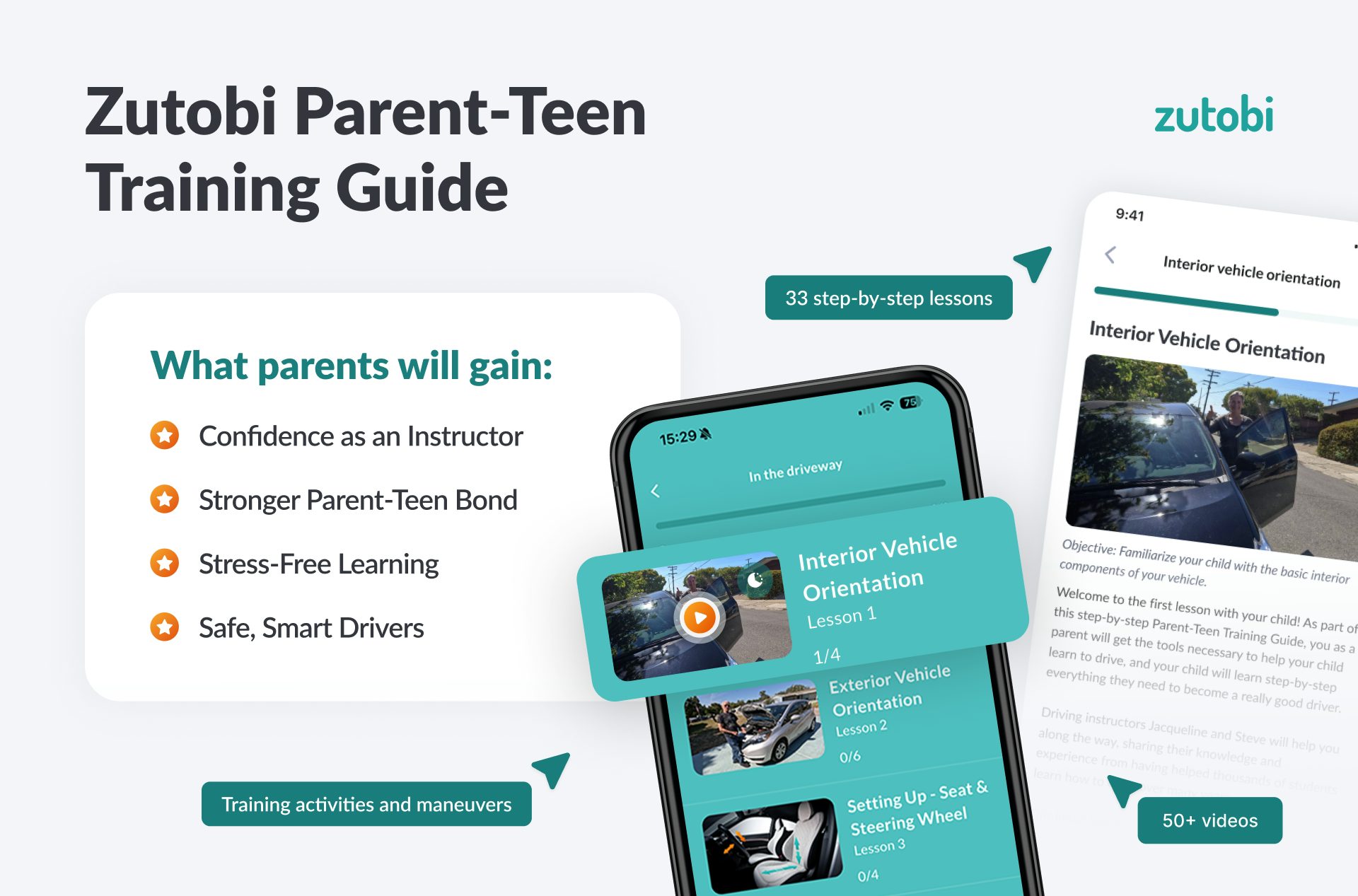
Understanding how driver education has evolved and the growing responsibilities placed on parents made one thing clear: families need more support. That’s why we created the Zutobi Parent-Teen Training Guide.
This guide was built specifically to close the Parent-Teacher Gap and make the learning process easier, safer, and less stressful for everyone involved.
Here’s what it offers:
- Step-by-step lesson plans — Designed for parents with no teaching experience
- Skill-specific guidance — Clear instructions for practicing everything from lane changes to roundabouts
- Progress tracking tools — Log hours, monitor improvement, and meet state requirements
- Emotional support strategies — Manage nerves, reduce stress, and build confidence
- Modern safety knowledge — Learn the features of today’s cars and how to use them effectively
- Judgment-based training — Teach your teen when and why to act, not just how
Methodology
We conducted a comprehensive review of changes in policy, accessibility, and instructional practices from 1980 through 2020. Our analysis focused on five key dimensions across four decades:
- Accessibility of driver education programs
- Affordability and cost trends
- Instructional quality and standardization
- Teen crash and fatality rates
- Parental involvement and available support resources
We reviewed data from government sources such as the Federal Highway Administration (FHWA) and Insurance Institute for Highway Safety (IIHS), along with academic research, state-level GDL policies, and historical education reports. To measure parental expectations and challenges, we analyzed trends in supervised practice requirements and available training resources. We also incorporated insights from Zutobi’s platform data, including common pain points reported by parents and feedback on digital learning features.

550+ exam-like questions
All you need to ace your test
Perfect for first-timers, renewals and senior citizens
Recommended articles
Ace your DMV test, guaranteed
Want to Be the Top School in Your Area?
- Simple & automated admin
- More time for teaching
- #1 learning materials for students
